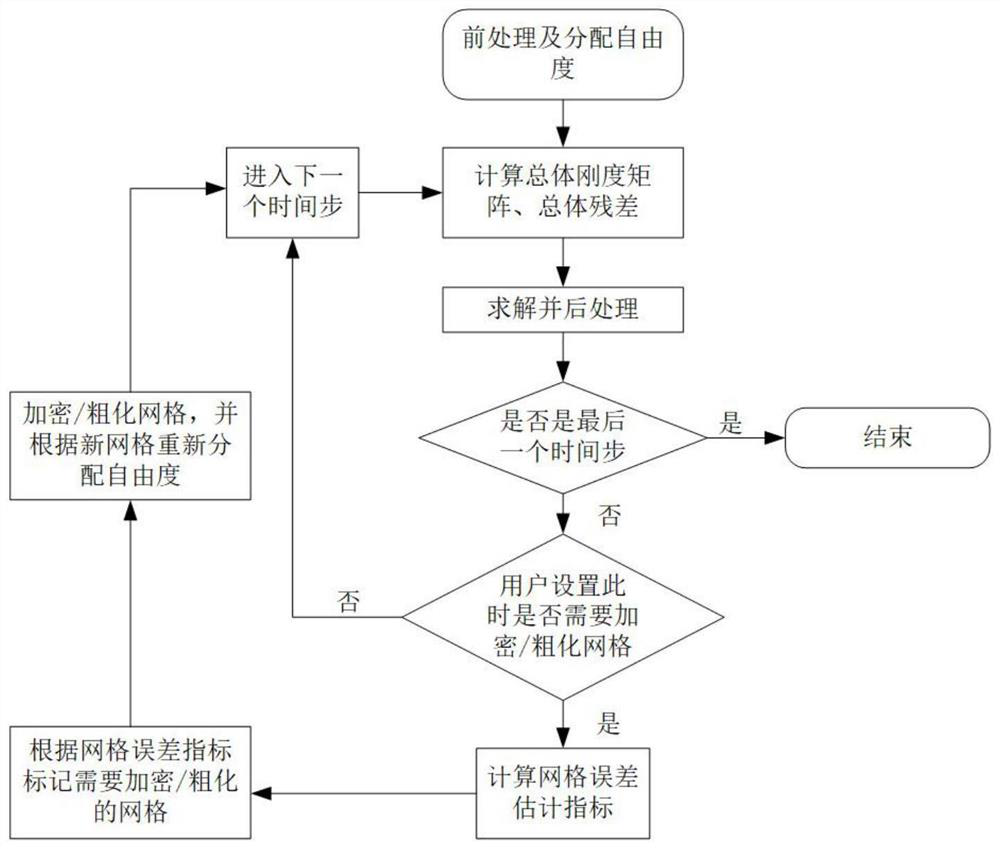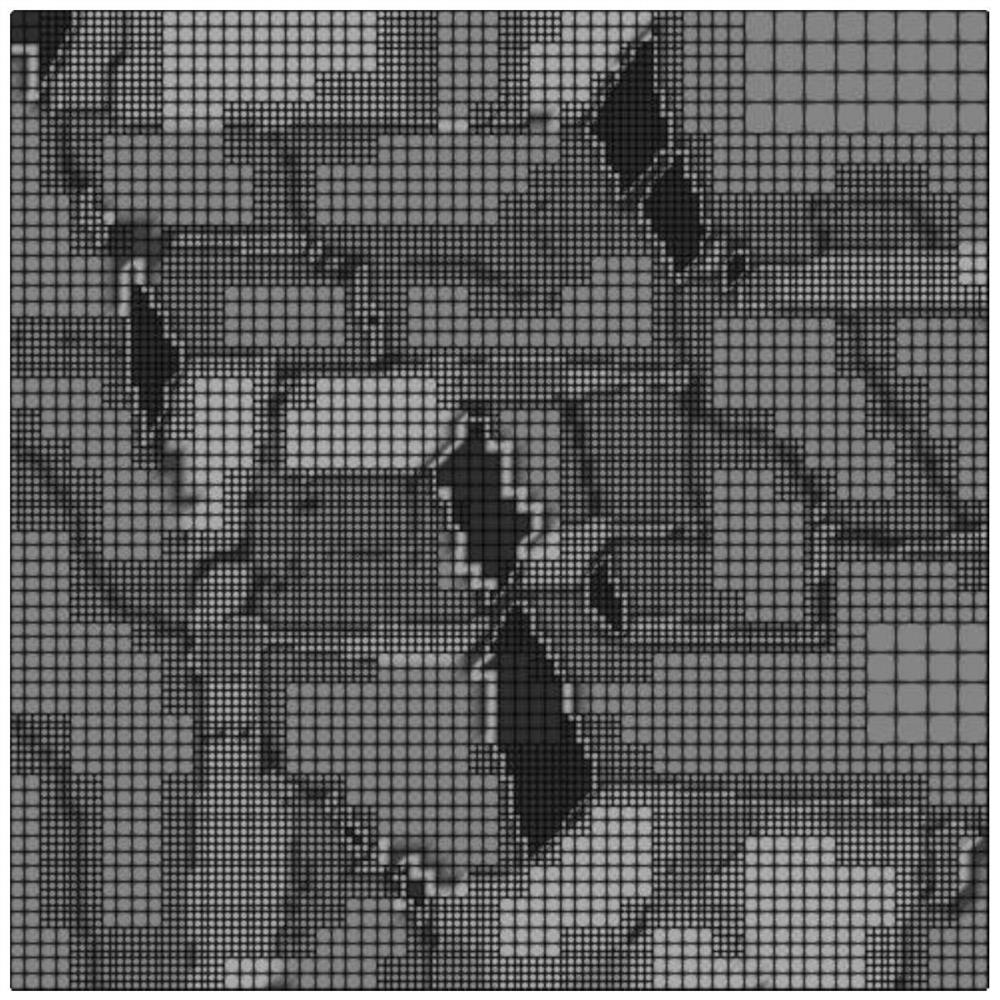Grid self-adaptive finite element method for simulating martensite phase transformation
A martensitic phase transformation and finite element technology, applied in CAD numerical modeling, special data processing applications, design optimization/simulation, etc., can solve the rare problems of solving dynamic evolution problems, achieve fast calculation methods, reduce calculation resource effect
- Summary
- Abstract
- Description
- Claims
- Application Information
AI Technical Summary
Problems solved by technology
Method used
Image
Examples
Embodiment 1
[0047] In this embodiment, a mesh adaptive finite element method for simulating martensitic transformation includes the following steps:
[0048] (1) Establish the phase field model of martensitic phase transformation, and establish the corresponding finite element model at the same time;
[0049] (2) Perform finite element pre-processing;
[0050] (3) Write the corresponding grid adaptive finite element program code, call the corresponding finite element program code and the open source finite element program deal.II, select the error estimation criterion to calculate the error estimate of each grid unit, and use the error estimate Determine whether the grid needs to be refined / coarsened by size, realize dynamic grid division in simulation calculations, track the interface of martensitic variants and refine the grid at the interface, coarsen the grid in the non-interface area, and reduce the overall grid Quantity, thereby reducing the total number of degrees of freedom of th...
Embodiment 2
[0054] This embodiment is basically the same as Embodiment 1, especially in that:
[0055] In this embodiment, taking the Ti2448 alloy as an example, the temperature-induced martensitic transformation at a temperature of 100K is calculated and simulated. In the step (1), the time-dependent Ginzburg Landau equation (Time Dependent Ginzburg Landau equation, TDGL equation) is used in the phase field model to describe the evolution process of the martensitic phase transformation, and the mechanical balance equation also needs to be satisfied :
[0056]
[0057] σ ij,j +f=0,
[0058] where η p The field variable of the phase field model also becomes an order parameter, representing the pth martensite variant; L is the kinetic coefficient; F is the total free energy; δF / δη p is the variational derivative; f is the body force; σ ij is the stress tensor, obtained through the displacement field and the constitutive relation:
[0059] σ=C(η p ): ε el (u)=C(η p ): (ε tot (u)...
Embodiment 3
[0079] This embodiment is basically the same as the previous embodiment, and the special features are:
[0080] In this embodiment, taking Ti2448 alloy as an example, the stress-induced martensitic transformation at a temperature of 200K is calculated and simulated. see figure 1 , a grid-adaptive finite element method for simulating martensitic phase transformation, including the following steps:
[0081] (1) Establish the phase field model and finite element model of martensitic transformation:
[0082] The phase field model uses the time-dependent Ginzburg Landau equation (Time dependent Ginzburg Landauequation, TDGL) to describe the evolution process of the martensitic phase transformation, and also needs to satisfy the mechanical balance equation:
[0083]
[0084] σ ij,j +f=0,
[0085] where η p The field variable of the phase field model also becomes an order parameter, representing the pth martensite variant; L is the kinetic coefficient; F is the total free ene...
PUM
 Login to View More
Login to View More Abstract
Description
Claims
Application Information
 Login to View More
Login to View More - Generate Ideas
- Intellectual Property
- Life Sciences
- Materials
- Tech Scout
- Unparalleled Data Quality
- Higher Quality Content
- 60% Fewer Hallucinations
Browse by: Latest US Patents, China's latest patents, Technical Efficacy Thesaurus, Application Domain, Technology Topic, Popular Technical Reports.
© 2025 PatSnap. All rights reserved.Legal|Privacy policy|Modern Slavery Act Transparency Statement|Sitemap|About US| Contact US: help@patsnap.com



